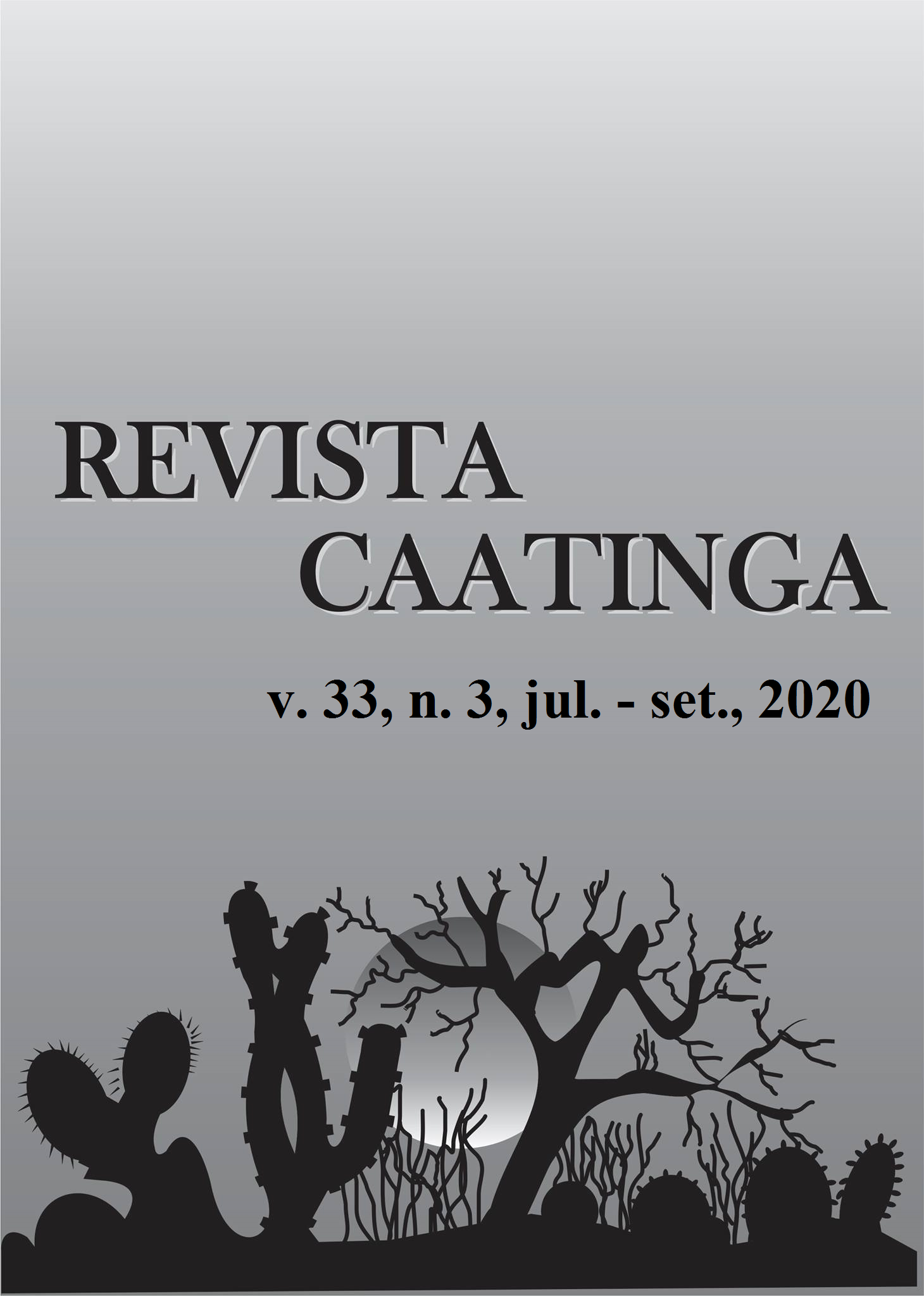INTERVAL BETWEEN SEQUENTIAL HERBICIDE TREATMENTS FOR SOURGRASS MANAGEMENT
DOI:
https://doi.org/10.1590/1983-21252020v33n301rcKeywords:
Digitaria insularis (L.) Fedde. Tiller-height. Glyphosate. Clethodim. Paraquat.Abstract
More than one herbicide application is usually necessary to manage glyphosate-resistant sourgrass in advanced stages of development efficiently during off-season fallow periods. The objective of this study was to determine the best interval between two sequential applications to control sourgrass, based on the number of days and tiller-height after the first treatment. Two experiments were conducted based on these criteria. Experiment 1 consisted of one application of glyphosate + clethodim (1140 ae ha-1 + 108 g ha-1) followed by glyphosate + clethodim or paraquat (400 g ai ha-1) at an interval of 10, 17, 24, 31, 28, or 45 days. Experiment 2 was conducted with the same herbicide treatments, but using the tiller-height as the criteria for the second application, which were 2-5, 6-10, 11-20, 21-30, and >30 cm. None of the treatments resulted in total sourgrass control during the evaluation period. Overall, treatments with glyphosate + clethodim in the second application were more efficient than paraquat. The most effective interval between sequential applications of glyphosate + clethodim was observed at 17 to 24 days. For paraquat, the best interval for the second application was 6-10 days. The most effective performances based on the tiller-height were found at 6-20 cm tall for glyphosate + clethodim and 6-10 cm tall for paraquat.
Downloads
References
BARROSO, A. A. M. et. al. Interação entre herbicidas inibidores da ACCase e diferentes formulações de glyphosate no controle de capim-amargoso. Planta Daninha, 32: 619-627, 2014.
CARVALHO, L. B. et al. Detection of sourgrass (Digitaria insularis) biotypes resistant to glyphosate in Brazil. Weed Science, 59: 171-176, 2011.
CONSTANTIN, J. et al. Sistemas de dessecação antecedendo a semeadura direta de milho e controle de plantas daninhas. Ciência Rural, 39: 971-976, 2009.
CORREIA, N. M.; ACRA, L. T.; BALIEIRO, G. Chemical control of different Digitaria insularis populations and management of a glyphosate-resistant population. Planta Daninha, 33: 93-101, 2015.
CORREIA, N. M.; DURIGAN, J. C. Manejo químico de plantas adultas de Digitaria insularis (L.) Fedde com glyphosate isolado e em mistura com chlorimuron-ethyl ou quizalofop-P-tefuril em área de plantio direto. Bragantia, 68: 689-697, 2009.
FIDALSKI, J.; YAGI, R.; TORMENA, C. A. Revolvimento ocasional e calagem em latossolo muito argiloso em sistema plantio direto consolidado. Revista Brasileira de Ciência do Solo, 39: 1483-1489, 2015.
GAZOLA, T. et al. Características biológicas de Digitaria insularis que conferem sua resistência à herbicidas e opções de manejo. Científica, 44: 557-567, 2016.
GEMELLI, A. et al. Estratégias para o controle de capim-amargoso (Digitaria insularis) resistente ao glyphosate na cultura milho safrinha. Revista Brasileira de Herbicidas, 12: 162-170, 2013.
GILO, E. G. et al. Alternatives for chemical management of sourgrass. Bioscience Journal, 32: 881-889, 2016.
INSTITUTO NACIONAL DE METEOROLOGIA – INMET. Dados meteorológicos. Disponível em: <http://www.inmet.gov.br/portal/index.php?r=estacoes/estacoesConvencionais>. Acesso em: 12 set. 2018.
LÓPEZ OVEJERO, R. F. et al. Frequency and dispersal of gliphosate-resistant sourgrass (Digitaria insularis) populations across Brazilian agricultural production areas. Weed Science, 65: 285–294, 2017.
LORENZI, H. Manual de identificação e controle de plantas daninhas. 7. ed. Nova Odessa, SP: Instituto Platarum, 2014. 379 p.
MACHADO, A. F. L. et al. Caracterização anatômica de folha, colmo e rizoma de Digitaria insularis (L.) Fedde. Planta Daninha, 26: 1-8, 2008.
MACIEL, C. D. G. et al. Eficiência de paraquat e MSMA isolados e associados a adjuvantes no manejo de plantas daninhas. Global Science and Technology, 4: 70-81, 2011.
MENENDEZ, J.; DE PRADO, R. Diclofop-methyl cross-resistance in a chlorotoluron-resistant biotype of Alopecurus myosuroides. Pesticide Biochemistry and Physiology, 56: 123-133, 1996.
MAROCHI, A. F. A. et al. Managing glyphosate-resistant weeds with cover crop associated with herbicide rotation and mixture. Ciência e Agrotecnologia, 42: 381-394, 2018.
MELO, M. S. C. et al. Alternativas de controle químico de capim-amargoso resistente ao glyphosate, com herbicidas registrados para as culturas de milho e algodão. Revista Brasileira de Herbicidas, 16: 206-215, 2017.
MELO, M. S. C. et al. Alternativas para o controle químico de capim-amargoso (Digitaria insularis) resistente ao glyphosate. Revista Brasileira de Herbicidas, 11: 195-203, 2012.
MONQUERO, P. A. et al. Eficiência de herbicidas pré-emergentes após períodos de seca. Planta Daninha, 26: 85-193, 2008.
OREJA, F. H.; FUENTE, E. B.; FERNANDEZ-DUVIVIER, M. E. Response of Digitaria insularis seed germination to envirolnamental factores. Crop and Pasture Sciences, 68: 45-50, 2017.
PROCÓPIO, S. O. et al. Eficácia de imazethapyr e chlorimuron-ethyl em aplicações de pré-semeadura da cultura da soja. Planta Daninha, 24: 467-473, 2006.
SILVA, A. C. et al. Análise de crescimento de Brachiaria brizanta submetida a doses reduzidas de fluazifop-p-butil. Planta Daninha, 23: 85-91, 2005.
SOCIEDADE BRASILEIRA DA CIÊNCIA DAS PLANTAS DANINHAS - SBCPD. Procedimentos para instalação, avaliação e análises de experimentos com herbicidas. 1. ed. Londrina, PR: SBCPD, 1995. 42 p.
ZOBIOLE, L. H. S. et al. Controle de capim-amargoso perenizado em pleno florescimento. Revista Brasileira de Herbicidas, 15: 157-164, 2016.
Downloads
Published
Issue
Section
License
Os Autores que publicam na Revista Caatinga concordam com os seguintes termos:
a) Os Autores mantêm os direitos autorais e concedem à revista o direito de primeira publicação, com o trabalho simultaneamente licenciado sob a Licença Creative Commons do tipo atribuição CC-BY, para todo o conteúdo do periódico, exceto onde estiver identificado, que permite o compartilhamento do trabalho com reconhecimento da autoria e publicação inicial nesta revista, sem fins comerciais.
b) Os Autores têm autorização para distribuição não-exclusiva da versão do trabalho publicada nesta revista (ex.: publicar em repositório institucional ou como capítulo de livro), com reconhecimento de autoria e publicação inicial nesta revista.
c) Os Autores têm permissão e são estimulados a publicar e distribuir seu trabalho online (ex.: em repositórios institucionais ou na sua página pessoal) a qualquer ponto antes ou durante o processo editorial, já que isso pode gerar alterações produtivas, bem como aumentar o impacto e a citação do trabalho publicado (Veja O Efeito do Acesso Livre).







